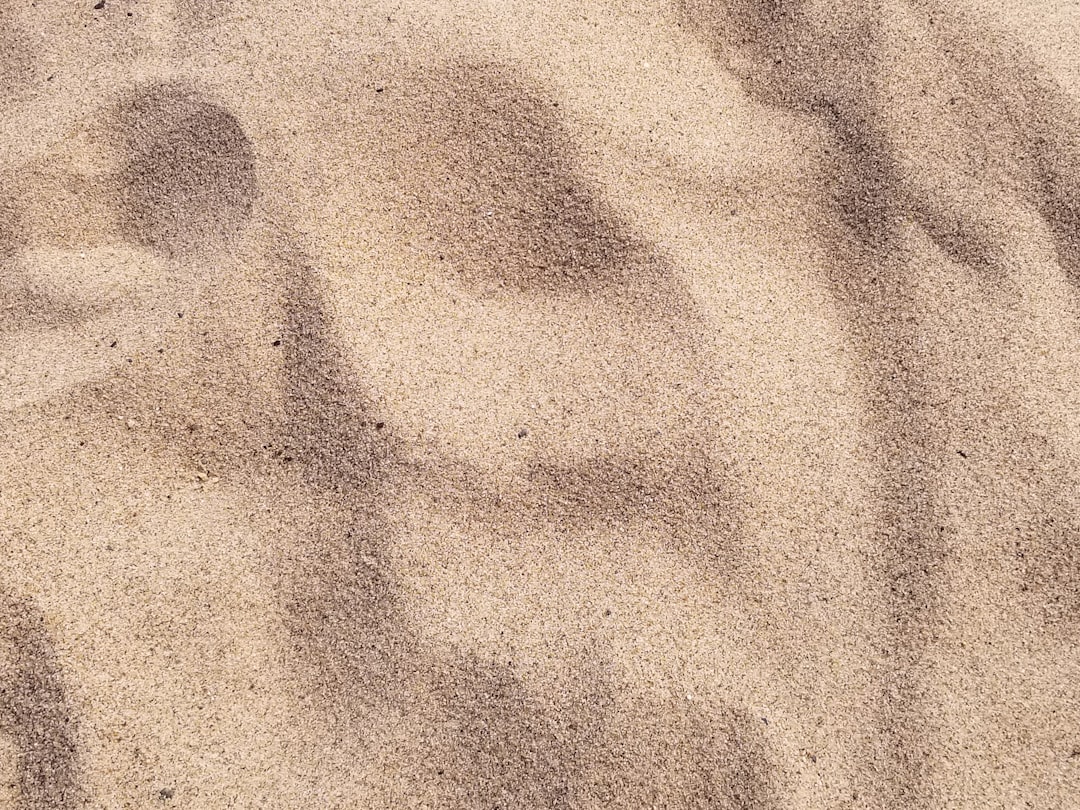 Photo from Unsplash
Photo from Unsplash
Originally Posted On: https://www.g3enterprises.com/blog/paver-sand-and-its-diverse-applications
Paver Sand and Its Diverse Applications
Paver sand is a vital component in many construction and landscaping projects. It plays an indispensable role in ensuring the stability, durability, and aesthetics of various traditional installations, such as patios, driveways, and walkways.
However, its application use cases have yet to be exhausted, and it has much-untapped potential. Beyond traditional uses, paver sand can be innovatively applied in areas like green roofing systems to provide stability and drainage while supporting plant growth.
This informational article seeks to delve into the different types of paver sand, their importance, various applications, and maintenance practices to ensure long-lasting installations.
What is Paver Sand?
Paver sand is a specially formulated sand used in the installation of pavers. In practice, it fills the gaps between pavers, enhancing their stability and preventing weed growth.
Types of Paver Sand
The main types of paver sand are:
- Silica Sand is the most common sand used for paver joints. It consists of small, spherical particles of white or yellowish sand.
- Polymeric Sand: This type of sand is explicitly designed for paver joints and is known for its durability and ability to withstand heavy rainstorms. It hardens once wet, making it perfect for paver joints.
- Mason Sand: This type of sand is finer than concrete sand and is often used for paver joints. It packs in tightly and is less likely to get washed away.
- Washed Concrete Sand: This type of sand consists of larger particles and is often used as part of the base for paver installations. However, as with other options, it can be prone to washing away and may not seal.
What is the difference between paver sand and regular sand?
The distinctions between paver sand and regular sand come from composition and function. While regular sand is a naturally occurring substance that constitutes small rock and mineral particles, paver sand is a specifically formulated material for use in paver joints.
Furthermore, paver sand is typically made from a mixture of fine sand and additives, like polymers. These polymers enhance the sand’s bonding properties, prevent washout, and ensure a long-lasting and aesthetically pleasing finish.
In contrast, regular sand is not inherently designed for use in paver joints. As such, its deployment can lead to poor vertical interlock, washout, and other issues that compromise the integrity of the paver installation.
Benefits of Paver Sand in Construction
Paver sand is indispensable in construction projects for several reasons:
- Improved stability: Paver sand provides a stable base for pavers, reducing the risk of shifting or cracking.
- Enhanced drainage: Paver sand allows water to drain through the joints, reducing the risk of water pooling and damage.
- Weed Prevention: By filling the gaps between pavers, paver sand reduces the chances of weed growth.
- Reduced Maintenance: Paver sand requires minimal maintenance. This is because it can be swept or cleaned infrequently.
- Aesthetic Appeal: Paver sand helps maintain paver installations’ clean and polished look.
The different applications of Paver Sand
Paver sand has a broad range of applications. Let’s look at some, shall we?
- Landscaping: Paver sand can be employed in sand landscaping projects that seek to create unique walkways and driveways with enhanced durability.
- Pool Decks: Paver sand can provide a stable, slip-resistant surface around pools. Thereby enhancing safety and appearance.
- Weed Prevention: Paver sand can create a barrier between pavers, discouraging weed growth and keeping outdoor spaces looking pristine.
- Playgrounds: It can be deployed to construct safe and stable playground surfaces, ensuring children’s safety during play.
- Erosion Control: Paver sand may be leveraged to prevent soil erosion by stabilizing the ground in areas prone to heavy rainfall or water flow. Its permeable nature also makes it an excellent choice for areas prone to flooding or where standing water is a concern.
- De-Icing: Paver sand can be utilized as a de-icer for icy surfaces by absorbing heat from the sun and providing traction
- Bedding and leveling agent: Paver sand can be employed as a bedding and leveling agent for pavers, providing height and support while promoting drainage.
- Concrete mix: It can be mixed with cement and gravel to create a concrete mix, making it an invaluable component in various construction projects.
Specialized Applications of Sand
Beyond its traditional use in filling joints between pavers, sand may be employed in specialized use cases, such as:
- Volleyball courts: Sand can offer a stable, well-draining surface for outdoor sports.
- Golf courses: Sand can provide optimal sand conditions for bunkers and other golf course areas.
- Horse arenas: Can be employed to create safe, durable footing for equestrian activities.
- Industrial uses: Can be utilized in various industrial applications requiring high-quality sand.
- Bottle manufacturing: Sand may be utilized to produce glass bottles.
Choosing the Right Paver Sand
Selecting the appropriate paver sand is critical for the success of any project. Factors to consider include:
- Type of Pavers: Different types of pavers require different types of sand. Polymeric sand is ideal for areas prone to water exposure, while joint sand may be sufficient for general landscaping.
- Quality: High-quality paver sand ensures better performance and longevity. So, seek out paver sand that is clean, well-graded, and free from impurities.
- Climate: The climate in which the pavers will be installed can also impact the type of sand used. Areas with heavy rainfall may benefit from using polymeric sand to prevent washout.
- Budget: The project budget may also impact the type of sand used. For example, industrial sand is often less expensive than landscape sand.
Installation Tips for Paver Sand
Proper installation of paver sand involves several methodical steps, for example:
- Preparation: Clear the area where the pavers will be installed of debris or obstructions. Additionally, slope the base away from structures to ensure proper drainage.
- Lay the base: Spread a gravel or crushed stone layer to accomplish a stable base. Then, compact the base to prevent settling.
- Lay the Sand and Pavers: Spread the sand evenly in the area and compact it using a plate compactor. Subsequently, lay the pavers on top of the sand, ensuring they are level and secure.
- Filling Joints: Iteratively spread additional paver sand over the surface and sweep it into the joints. Iteratively repeat the process until the joints are filled.
- Compact the Sand: Compact the sand around the pavers using a plate compactor.
Maintenance Tips for Paver Sand
To maintain the paver sand and ensure it remains effective, consider the following tips:
- Regularly inspect the paver sand for signs of erosion or damage.
- Compact the sand regularly to ensure it remains stable and effective.
- Clean the area around the pavers regularly to prevent debris from accumulating.
- Address any weed growth promptly to prevent damage to the paver joints.
- Replenish sand in areas where it has washed out to maintain stability.
Can using paver sand responsibly minimize its environmental impact?
Environmental stewardship and sand sustainability are important! In fact, using paver sand responsibly can appreciably minimize its environmental impact by ensuring proper installation, maintenance, and disposal practices.
For example, proper installation involves following industry standards and guidelines. This ensures the correct depth and compaction of sand between pavers, preventing erosion and water accumulation.
By the same token, regular maintenance, including inspecting for erosion, can help prolong the life of the pavement structure. Thus reducing the need for frequent replacements. Additionally, proper disposal of excess paver sand and materials can minimize waste and prevent environmental pollution.
By adopting these responsible practices, the environmental impact of paver sand can be significantly reduced.
Frequently Asked Questions (FAQs)
How is paver sand different from regular sand?
Paver sand is coarser and comprises additives that improve its binding properties. This makes it more effective at locking pavers in place compared to regular sand.
Can paver sand be utilized for any type of paver installation?
Yes, paver sand is versatile and can be employed for various paver installations, including patios, driveways, walkways, and pool decks.
How much paver sand do I need for my project?
The amount of paver sand needed depends on the size of the project. Usually, a layer of 1-2 inches of sand is spread beneath the pavers—with additional sand used to fill the joints. G3 Minerals generally load full truckloads for projects, starting at 24 tons. The average truckload of paver sand can cover about 1,000 to 1,500 square feet at a depth of 2 inches.
How do I maintain my paver sand installation?
Regular maintenance includes sweeping additional sand into the joints, cleaning the surface, and addressing any weed growth or erosion promptly.
Can paver sand be effectively used for de-icing?
Paver sand absorbs heat from the sun, which helps to expedite the melting process of ice and snow. This natural heat absorption is more environmentally friendly compared to using salt or other chemical de-icers. Furthermore, paver sand provides a textured surface that enhances traction. Thereby, reducing the likelihood of slipping and skidding on icy surfaces. In fact, paver sand is a safer alternative to salt for de-icing roads, sidewalks, and parking lots. Salt can damage steel and concrete over time, whereas sand does not have these negative effects.
Can paver sand prevent weeds and insects?
Using polymeric sand, which contains additives that react with water to form a strong bond, can help deter weed growth and resist erosion.
What should I do if my paver sand washes out?
If paver sand washes out, it can be replenished by brushing new sand into the joints and compacting it. For long-term solutions, consider employing polymeric sand, which hardens and reduces washout.
Where to get paver sand in California
As we have seen, paver sand is mission-critical in construction and landscaping. By understanding the different types of paver sand and their diverse applications, one can make informed decisions for their projects.
Overall, paver sand’s versatility and beneficial properties suggest that it can significantly advance sustainable construction and landscaping practices. Thereby offering solutions to various environmental and infrastructural challenges.
When exploring where to buy paver sand in bulk, consider G3 Enterprises’ extensive product offerings. Located in Northern California, they can ship sand throughout the state in bulk or super sacks.
G3 Enterprises paver sand is carefully processed using sustainable practices and screened to ensure consistent quality and performance. This makes them an excellent choice for contractors, landscapers, and construction companies looking to source top-quality materials for their diverse paving projects.





